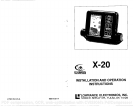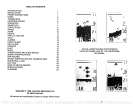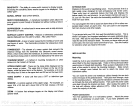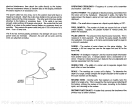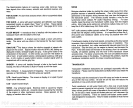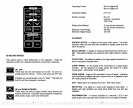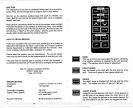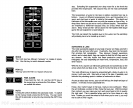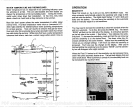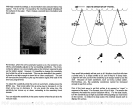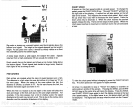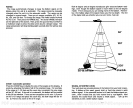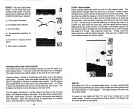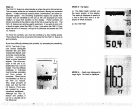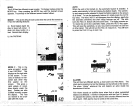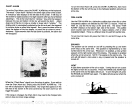
r
ci
3.;
ZOOM
11
flSH
D
i
El
Fish arches are created when the cone of sound
passes
over
a fish.
The distance to a fish when the cone first strikes it is shown as
"A" on
the next
page.
When the center of the cone strikes
the
fish,
the
distance is
shorter,
as shown in "B". As the cone leaves the
fish,
the
distance
increases
again
as shown in "C".
When the Fish l.D. feature is
off,
the
depth
of the water will affect
the
size and
shape
of the fish arch due to the cone
angle
diameter.
For
example,
if the cone
passes
over a fish in shallow
water,
the
signal
displayed
on
the unit
may
not arch at all. This is due to the narrow cone
diameter and the resolution limitations of the
display.
To view
the chart
speed
without
changing it, press
the CHART SPEED
key.
The chart
speed
bar will
appear
for
eight
seconds.
At times it is desirable
to
stop
or "freeze" the
display
to examine an
echo before it scrolls off the
screen.
Pressing
the
SENS. and CHART
SPEED
keys
at the same
time will freeze the
display.
Press
the SENS.
and CHART SPEED
keys
again
to start the
display
moving
at the
last
chart
speed setting.
If the
digital
sonar
is
on,
the bottom
depth
will still
be
displayed.
The
digital
does
not
stop
when the chart is
in
the
"freeze"
mode.
20
9
CHART SPEED
At
power
on,
the chart
speed
scrolls
at a
preset speed.
To
change
the
speed, press
the CHART SPEED
key.
The word "CHART"
will flash on
the
right
side of the
display.
A vertical bar will also
appear
on
the left
side of the screen.
This indicates the current chart
speed.
Next,
press
the
up
arrow
key
if
you
wish to increase the chart
speed.
Press the
down arrow
key
to decrease
it. When the chart reaches the
desired
speed,
release the
key.
There are five
steps
of chart
speed.
When the
chart
speed
reaches its
maximum or minimum
level,
the unit
will sound
atone.
57L_J
Big
rocks or
stumps
bottom level
signal.
height.
As
you pass
line
extending
above
on a smooth bottom send
back
signals
above the
The
height
of the
signal depends
on
the
target's
over a
post,
it should be
clearly
visible as
a short
the bottom
signal.
A
steep slope
returns a wide
signal,
the
steeper
the wider.
Signals
returned from a
high
underwater cliff are
usually
the widest of all.
Brush
usually
lies on the bottom and shows
up
as
clumps
rising
above
the bottom
signal.
Brush
signals
look similar to
large rocks;
however
their
signal
is not as
strong
as rock.
FISH ARCHES
PDF compression, OCR, web-optimization with CVISION's PdfCompressor



